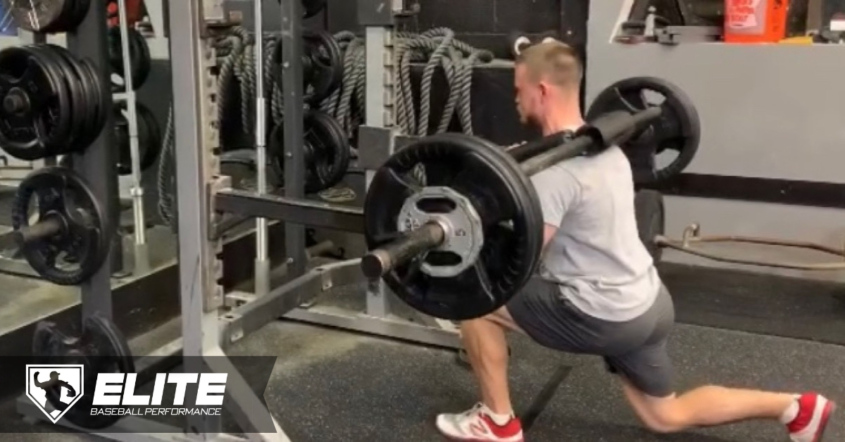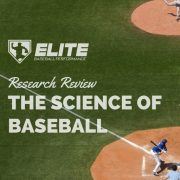In-Season Training Metrics for the Baseball Player
The high school season is closing in! This was truly a remarkable off-season for me personally. We’ve had multiple athletes put on 15-20 pounds while simultaneously moving better and getting a lot stronger, and we’ve had athletes lose a few pounds while accomplishing the same things.
We said “see ya later” to our professional pitchers Joe Palumbo (Texas Rangers), Anthony Kay (New York Mets), Ben Brown (Philadelphia Phillies), Mike O’Reilly (St. Louis Cardinals), Kyle McGowin (Washington Nationals), and Bruce Kern (Lamingo Monkeys, Taiwan) and we are super excited to see the stellar season they are all going to have!
We also said “hello” to multiple high school athletes who are getting their names on the radar, and have some young men who might hear their name called in June for the 2019 MLB Amateur Draft.
With that being said, none of this will matter if training is put to a halt once March hits.
Fortunately, the official high school season start date was pushed back 2 weeks to accommodate for the brutal northeast weather. This means 2 more weeks of pre-season development!
The entire focus of in-season training is completely different from off-season and pre-season training, and I would like to highlight those differences in this post.
Injury Prevention
The baseball player’s workload volume increases a TON once practice starts. Throwing and swinging 5/6 times a week coupled with cold weather really do not mix well from an injury prevention standpoint.
Overuse injuries are real, and they could be hiding beneath the surface. One aspect of in-season training is maintenance of joint health. Here’s what gets abused repeatedly in the game of baseball:
- The left ankle gets over worked when performing multiple base running drills, leaving the other muscles on the same side to become overworked, and leaving the other side of the body exposed
- The pelvis tends to get dumped into an anterior tilt during the swing as well as an overactive quadratus lumborum from lateral tilt, which can lead to low back pain and stiffness during rotation
- Hamstrings get tired and over worked from changing surfaces of sprinting: turf in the off-season to hard dirt with cleats during practice
- The posterior shoulder takes a beating from both throwing and swinging a bat
- The medial elbow also takes a beating from both throwing and swinging a bat
- The thoracic spine (the mid back) gets out of whack and shows muscle imbalances from swinging, which can also lead to altered muscle firing patterns
- The cervical spine (the neck) gets over worked from looking over one shoulder for multiple at bats
To prevent any injury from occurring, we must do 4 things religiously well:
- Mobilize/desensitize the overactive joints, which will be very common among most of the population
- Activate the problem areas associated with baseball movement patterns
- Learn how to reset the body and find peace of mind with relaxation techniques/breathing drills
- continue to get stronger, develop, and preserve your power stores
There is some great research from the American Sports Medicine Institute discussing movement of the shoulder and elbow and the risk of injury. See here and here.
- Pitchers should have within 5 degrees of total rotational motionof both shoulders. If your throwing shoulder is significantly less than your other shoulder, you are 2.6 times more likely to sustain an injury.
- Pitchers should have at least 5 degrees more external rotation in their throwing shoulder when compared to their nonthrowing shoulder. Pitchers with less than a 5 degree difference are 2 times more likely to sustain an injury.
- Pitchers with a deficit of 5 degrees in shoulder flexion are 2.8 times more likely to sustain an elbow injury.
Performance Enhancement
“If you don’t use it, you lose it”.
This is the biggest concept to understand when training in-season. You spent all winter developing your strength and power to get ready for the long season.
For every week taken off from training, will be lost, dependent on training age. For the entire high school season being at least 12 weeks, that is at least 36% of your strength gains out the window.
You could train ONCE a week during the season and further maintain and improve your strength numbers to keep your strength around. Easy fix.
However, speed on the other hand tends to be lost a lot quicker. You will be displaying your speed multiple times throughout the week from base running and getting to balls over your head, but if you’re not training your speed at some point then you are limiting yourself as a baseball player.
On the other hand, let’s just think about the aggressive action of the upper body during the throwing motion. Repeated eccentric stress will result in a loss of strength and mobility in some joints. To prevent this loss from being chronic, you need to strengthen these areas and try to get as close to your “baseline” as possible.
I’m a big believer in auto-regulation ever since I got my hands on the research in college. I saw first-hand a group of trainees get stronger and put on even MORE muscle by following an auto-regulated training model as compared to a fixed periodization scheme.
To put it in the simplest terms, auto-regulation can be thought as listening to your body. You are the only one who knows your body better than anyone else. Rather than chasing the numbers on the bar, or the percentages of your 1-RM, try chasing your rate of perceived exertion (RPE) during the season.
Not only will you further enhance your strength and power, but you will also reduce the likelihood of being fatigued from your lift. Get in and get out!
Recovery Management
At Infiniti Sports Performance, we like to use restorative techniques and modalities in our popular recovery room during the season, taking “arm care” to a whole other level. These techniques include, but are not limited to:
- Myofascial massaging
- Foam rolling and lacrosse ball trigger point release
- Cupping
- Voodoo wrapping
- Vibration massage
- Marc Pro systems
- Mobility training
There are a ton of modalities that we can use to promote recovery for the baseball player, and we usually recommend a recovery session within 48 hours of your last pitch.
While the body should be doing most of the work itself when it comes to recovery, we assist in the process with the techniques and tools listed above.
However, since there are many ways to instill “recovery” work with the baseball player, we do not want them to get married to these concepts. Here is why.
Our body craves adaptation, and it also can get habituated to the same stimulus. Just like how we periodize and vary our strength programs, the same concept goes for recovery work.
Conclusion
Every baseball player needs to take advantage of in-season training. To sum it up, here is why:
- Overuse injuries are real, and they could be hiding beneath the surface. One aspect of in-season training is maintenance of joint health
- Learn how to reset your body in conjunction with getting stronger and more resilient
- Loss of range of motion in the throwing shoulder can lead to an increased injury risk of up to 2.8 times greater than pitchers without motion loss.
- For every week taken off from training, usually 3-5% of your strength gains will be lost, dependent on training age.
- Following an auto-regulated training model allows the player to still develop while minimizing fatigue
Jarad Vollkommer
Latest posts by Jarad Vollkommer (see all)
- Strength-Speed: Customized Mechanics for Baseball Pitchers - August 20, 2019
- Determining Individual Stability Needs for the Baseball Player - June 25, 2019
- In-Season Training Metrics for the Baseball Player - March 5, 2019







yall the best keep it up